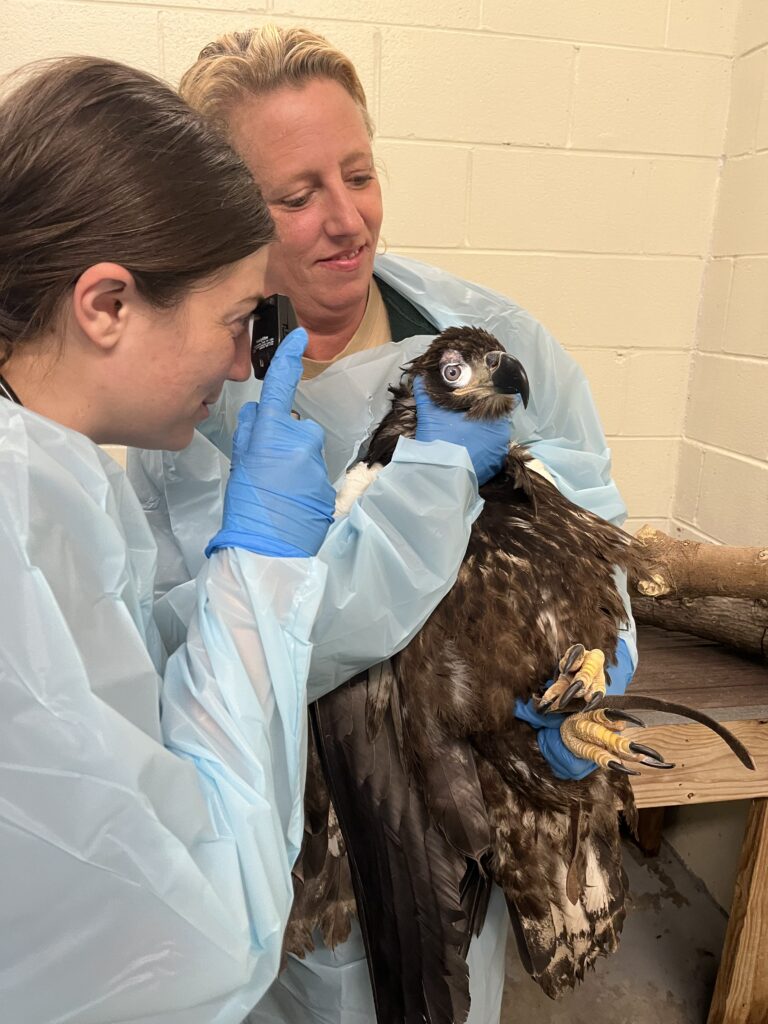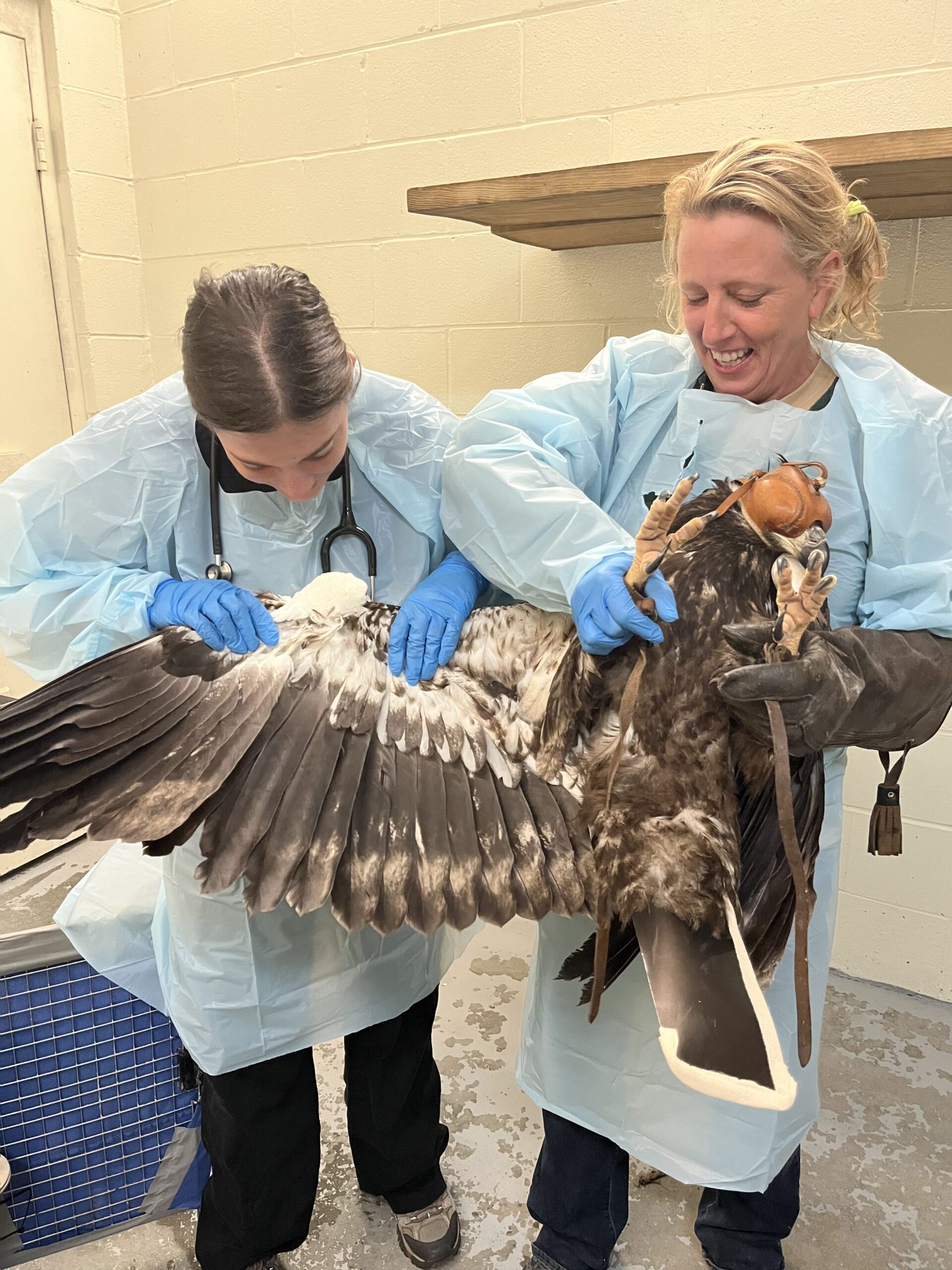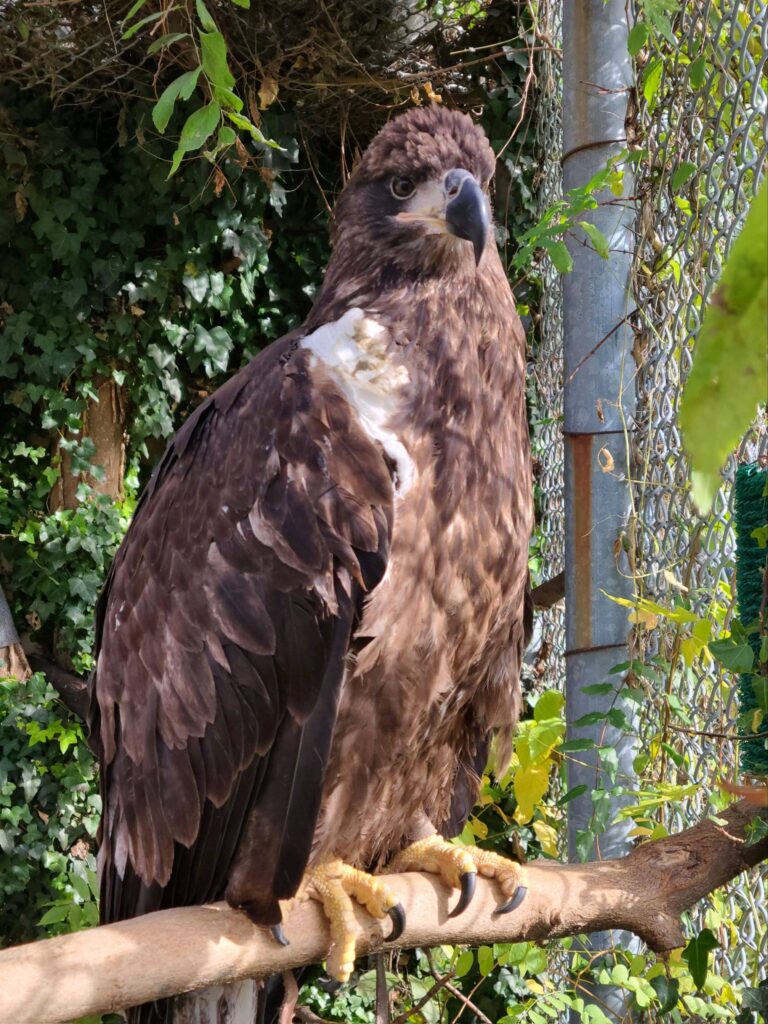Sanibel’s Story: In Honor Of U.S. National Save the Eagles Day
Our newest bald eagle, Sanibel, came to the Virginia Zoo after an inspiring rescue and rehabilitation effort, and we are honored to share her survival story on U.S. National Save the Eagles Day.
Sanibel hatched around April 4, 2022, in Sanibel, Florida (hence her name). After her nest fell to the ground, she was found emaciated at the base of her nest tree and taken to a facility for rehabilitation until 12 weeks of age.

her intake exam.

While Sanibel was lucky to be saved, her first rehab facility didn’t have other eagles in its care, leaving her with a lack of role models. Eaglets need other eagles to learn from, so Sanibel relocated to the Audubon Center for Birds of Prey in Maitland, Florida, a center that specializes in eagle rehabilitation. Here, she thrived among other eagles, learned how to perch, and gained confidence. The original goal was give her the ability to be released and survive back in the wild, but Sanibel became too fond of humans, and the U.S. Fish and Wildlife Service deemed her non-releasable.
After applying for a permit through USFWS and meeting all of the standards for bald eagle ambassadors — appropriate housing, training, keeper expertise, and educational opportunities — we are happy to report that the Virginia Zoo will be Sanibel’s forever home.
Bald eagles, a conservation success story, were once on the endangered species list due to lead poisoning and DDT, a pesticide ingested when they fed on contaminated fish. Today, they are federally protected under the Migratory Bird Treaty Act and the Bald and Golden Eagle Protection Act, a national symbol and one of North America’s largest birds.
Sanibel is acclimating to her new home quickly. Her trainers say that she is smart and catches on to training with ease. They are hopeful that she will be make her first public appearance at the Zoo in late spring.
